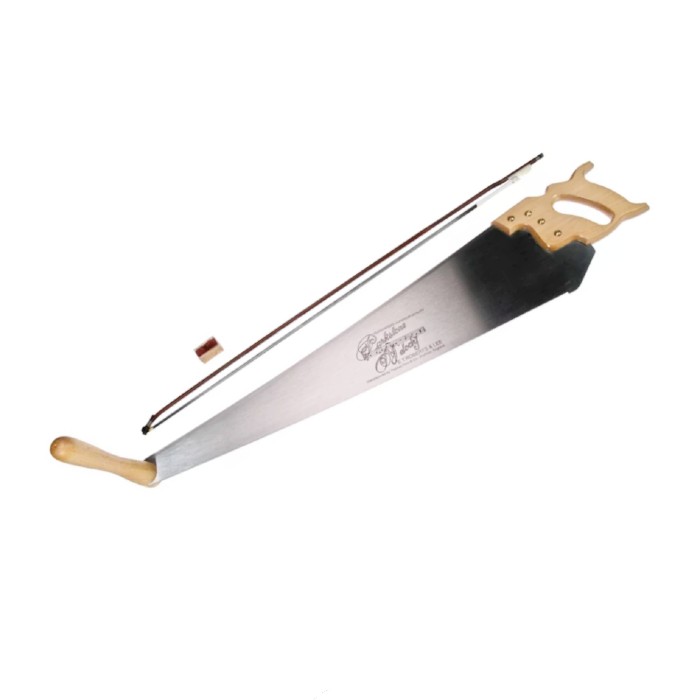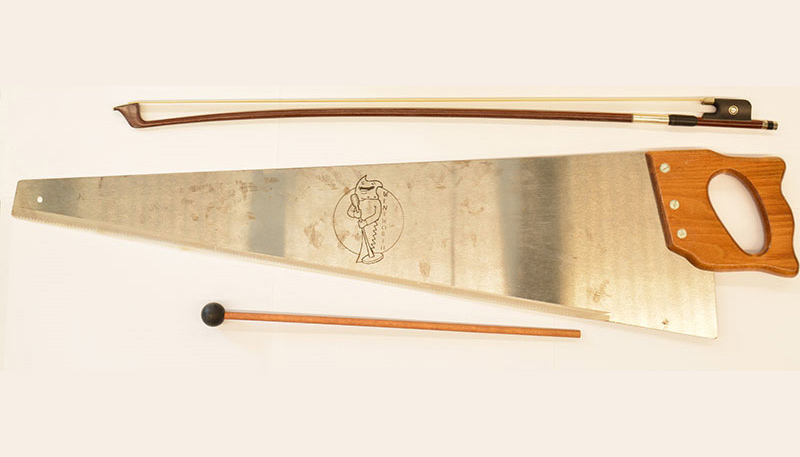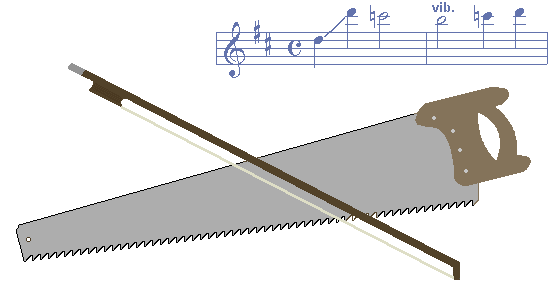Musical saw
Bowed Instruments
America
Between 1001 and 1900 AD
Video
The musical saw, also called the singing saw, is a captivating instrument known for its haunting, ethereal tones that resemble a human voice or a theremin. Its history, development, and cultural significance illustrate its transformation from a humble tool to a unique and versatile musical instrument.
History of the Musical Saw
Origins
The musical saw is believed to have originated in the early 19th century, particularly in the Appalachian Mountains of the United States. The story goes that an inventive musician discovered the instrument’s potential by bowing a carpenter’s saw with a fiddle bow while holding it between their knees. The resulting sound, produced by flexing the blade into an S-curve, revealed the saw’s melodic capabilities.
However, similar practices of creating music from tools have been documented in other parts of the world, such as Russia and Argentina, where laborers independently discovered that their saws could produce musical tones. These global claims suggest that the musical saw may have developed in parallel across different cultures.
Development
In 1919, Clarence Mussehl, a key figure in the history of the musical saw, began refining the instrument’s design. By experimenting with thinner, more flexible steel, Mussehl created saws capable of better resonance and smoother vibrato. His innovations allowed the saw to produce 16-20 distinct notes, making it more viable as a performance instrument. By 1921, Mussehl had begun commercial production of specially designed musical saws under his company, Mussehl & Westphal, which remains a prominent name in the field today. The musical saw gained widespread popularity during the vaudeville era in the early 20th century. Its unique sound made it a favorite in theatrical performances, and it was often featured as a novelty instrument, captivating audiences with its seemingly otherworldly tones.
Cultural Significance
Religious and Folk Use
Beyond the stage, the musical saw found its way into religious contexts, particularly in church services where traditional instruments were unavailable. Its ethereal sound provided a fitting accompaniment for hymns and spiritual music, adding a transcendent quality to worship.
Decline and Revival
The instrument’s popularity began to decline during and after World War II due to several factors:
- Many skilled players were drafted into the war, leading to a loss of knowledge transfer to new generations.
- Steel shortages limited the production of new musical saws.
- The decline of vaudeville, a major platform for the musical saw, reduced performance opportunities.
- Despite these setbacks, the musical saw experienced a revival in the late 20th and early 21st centuries. Its unique sound attracted renewed interest, particularly in folk music, film scores, and experimental genres.
Modern Usage
Today, the musical saw is celebrated for its versatility and distinctiveness. It is used in a variety of musical contexts:
Folk and Traditional Music: It remains a staple in folk traditions and rural performances.
Film and Media: Its haunting tones are often featured in movie soundtracks to evoke emotion or create an eerie atmosphere.
Experimental Music: Contemporary musicians have embraced the musical saw in avant-garde and experimental compositions, pushing the boundaries of its expressive potential.
The musical saw is also a popular instrument at festivals and competitions, where enthusiasts gather to celebrate its legacy and showcase its melodic capabilities. The musical saw’s journey from a carpenter’s tool to a cherished instrument highlights the ingenuity of musicians and the adaptability of cultural traditions. Its ethereal sound, combined with its rich history, ensures that it remains a distinctive and enduring part of the musical landscape, captivating audiences with its timeless charm.
FAQ
What is the musical saw made of?
The musical saw is made of a flexible steel blade with a polished surface. It typically has a wooden or metal handle for grip. The blade’s flexibility allows it to produce sound when bowed or struck.
What is the musical saw used for?
The musical saw is used to create ethereal, singing tones in music, often resembling the sound of a theremin or human voice. It is played by bending the saw into an S-shape and bowing along its edge with a violin or cello bow. The musical saw is commonly used in folk, experimental, and cinematic music to evoke a haunting or whimsical atmosphere.
What kind of sound we can produce by using musical saw?
A musical saw produces an ethereal, haunting sound often described as a "singing" or "whistling" tone. By bending the saw into an S-curve and bowing along its edge with a violin bow, players create smooth, gliding pitches similar to a theremin or a soprano voice. The sound is versatile, capable of both eerie and lyrical melodies, making it popular in experimental, folk, and cinematic music.
Other Instrument
Categories





















